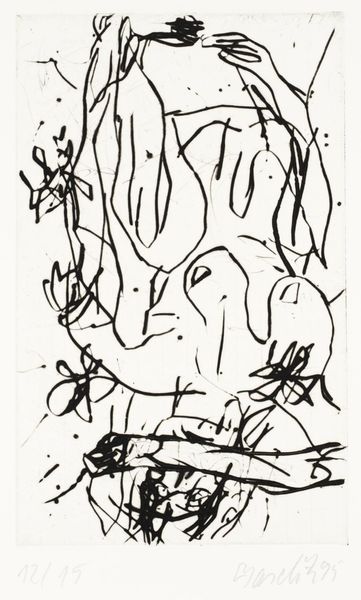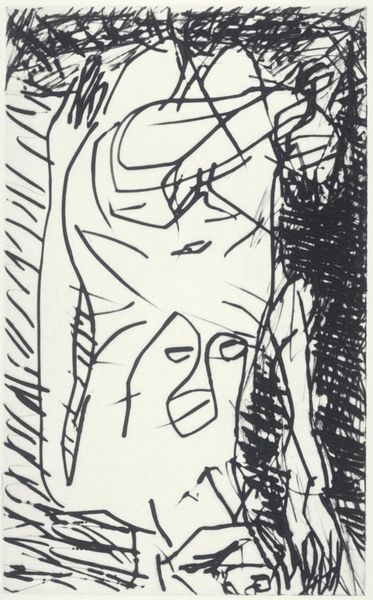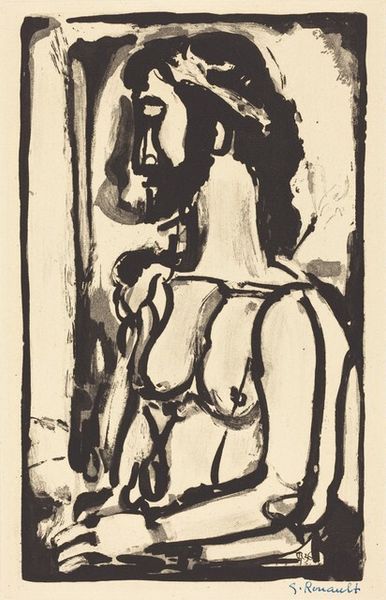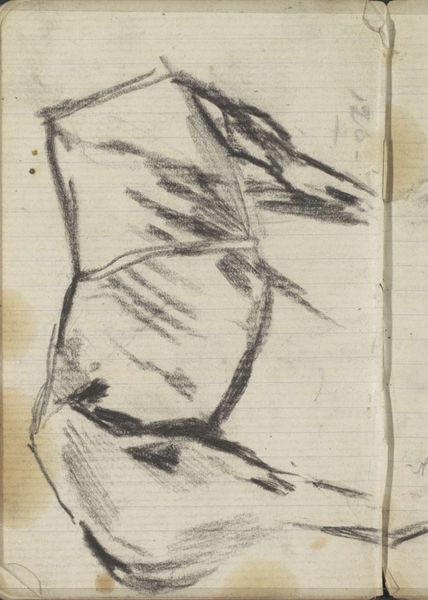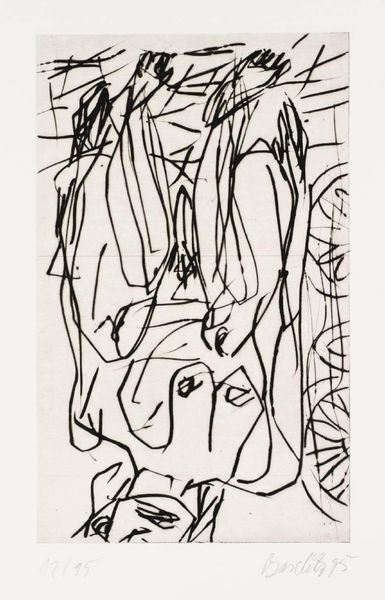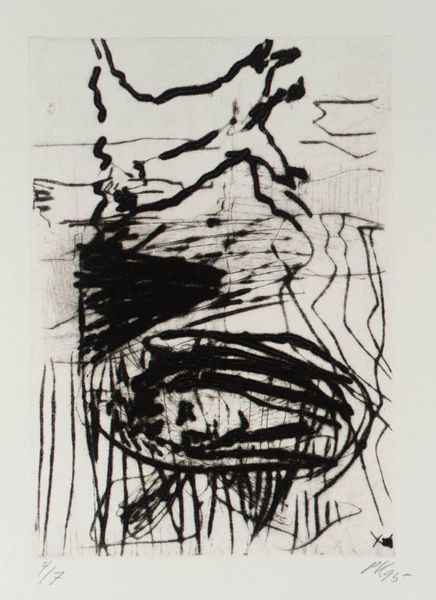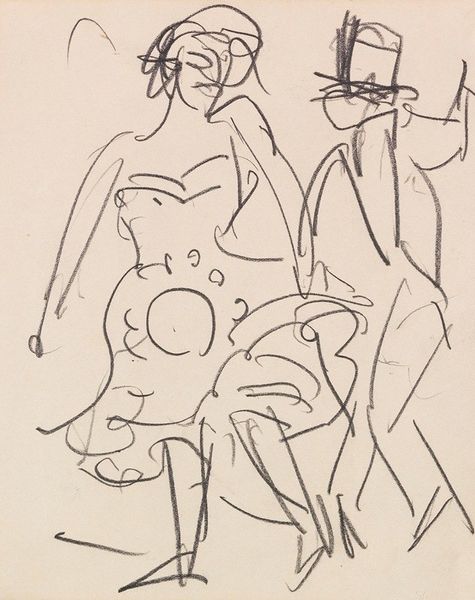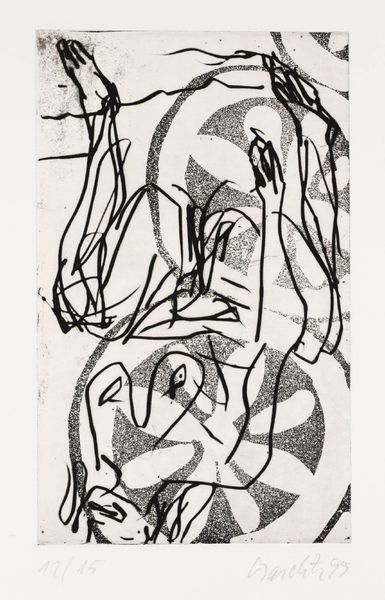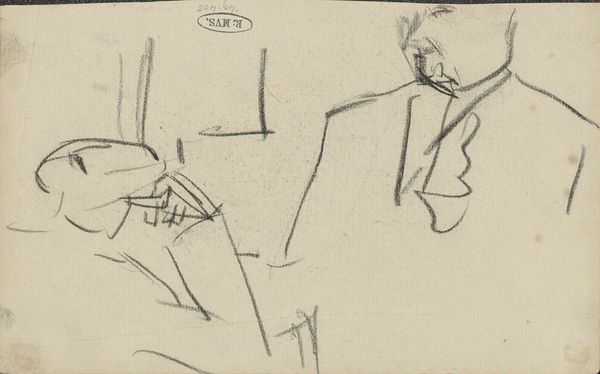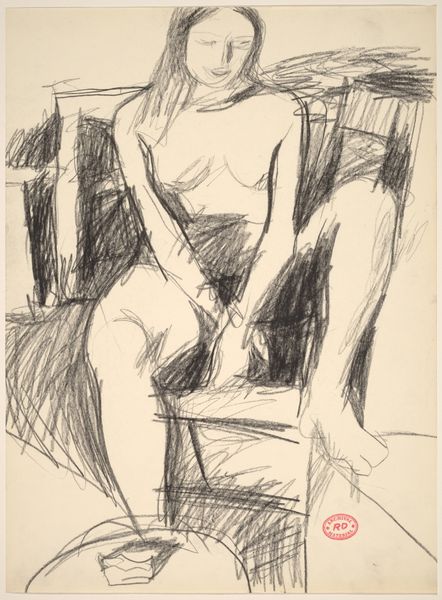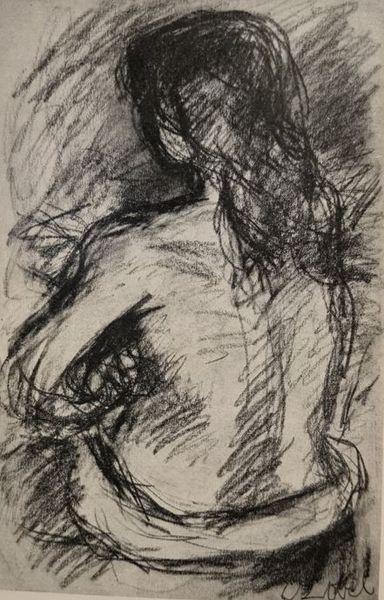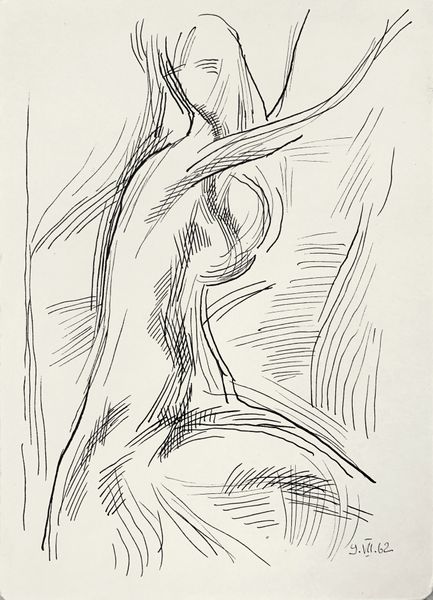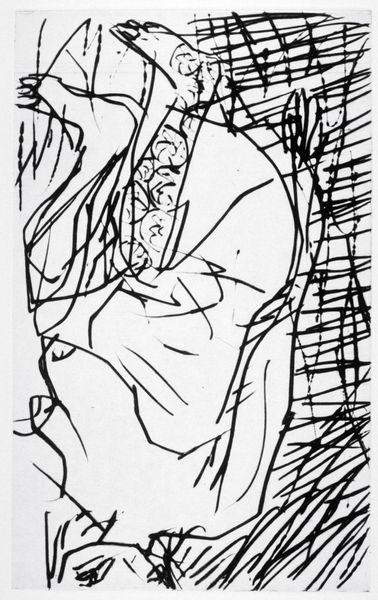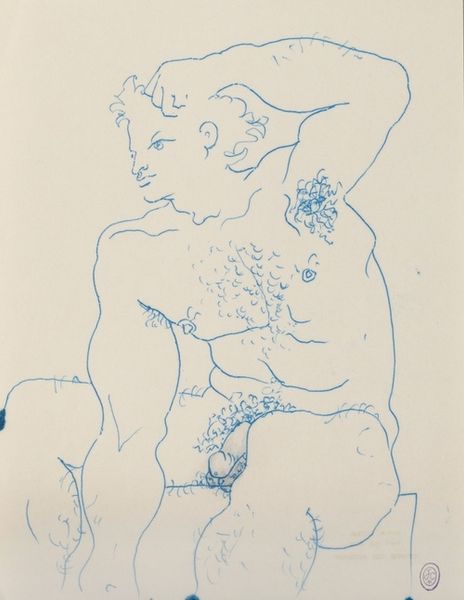
drawing
#
drawing
#
ink drawing
#
pen sketch
#
figuration
#
expressionism
#
nude
Copyright: Public Domain: Artvee
Curator: Here we have Ernst Ludwig Kirchner’s “Nude on the Beach,” a drawing rendered around 1910. Editor: It's raw. The scratchy blue ink, the coarse paper – you can almost feel the speed of the artist's hand, like a stolen moment captured urgently. Curator: Precisely. Kirchner was at the heart of Die Brücke, a group keen on challenging bourgeois conventions. Their nudes, often rendered quickly, reflected a search for authenticity. Editor: The lack of shading or detail feels almost…defiant. Like he's stripping away the artifice of traditional academic nudes. What was the cultural climate surrounding nudes at that time? Curator: Germany, then under Wilhelm II, had stringent moral codes, at least publicly. Art offered a venue to skirt censorship and question norms regarding the body and pleasure. This sketch, I suspect, holds that spirit. Editor: So, it’s a statement. You know, seeing this level of undress on something as coarse as inexpensive paper almost seems like an appropriation, doesn't it? Using everyday material for something taboo at the time adds a kind of subversive edge. It turns fine art on its head. Curator: Intriguing. Think about where such sketches may have been exhibited, possibly even privately. Expressionism thrived, in part, because it found alternative routes beyond the official art system. That makes the "Beach" setting very powerful. Kirchner sought liberation not only in style but location and subject matter. Editor: It speaks to the production constraints, too. Imagine him, out there, materials kept light so he could discreetly go against what society and the Academy accepted. It speaks volumes. This sketch, so quickly rendered, becomes this perfect little act of artistic transgression. Curator: It does challenge our conceptions. The expressive strokes disrupt any pretense to prettification, underscoring his anti-establishment views. Thank you, this lens provides new grounds to view this. Editor: Thank you. Considering what the art embodies for both the art market and art maker gives me something to keep in mind while experiencing the work.
Comments
No comments
Be the first to comment and join the conversation on the ultimate creative platform.
